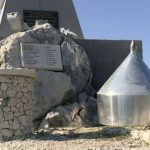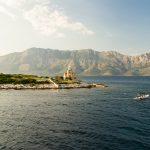As Morski writes on the 11th of April, 2020, 21 ”tubes” for the Neretva Valley’s upcoming wind organs were delivered to the construction site of the unique wind organ project, which sits 114 metres high on Trovro hill in Rogotin, and the installation of the first tube into a 15.5 metre long concrete structure built by Trag employees from Dubrovnik began on Monday.
These tubes are made of a special type of stainless steel, they’re resistant to even the most harsh weather conditions, and were built by the Kvaternik Orguljarstvo company from Koprivnica. The director of the aforementioned company, Alen Kvaternik, came to the site to organise the works on the installation of the tubes with chief construction engineer, Ivan Simovic, and supervising engineer, Matko Medak. Through pipes which are 120cm in diameter, air will flow in and produce sound. The pipe will be delivered from Koprivnica to Rogotin after the tubes have been fully installed.
Currently, two of the three structures have been completed, while the third is being completed, followed by the installation of the instruments and the stonework, which is the final phase of the wind organ project in the Neretva Valley.
The wind farm investment is worth just over three million kuna, and besides the installation of the tubes, it includes paving the path with stone slabs from the site, installing benches made of natural materials, such as stone and wood in accordance with the local environment, setting up an information map, creating a plateau from stone drywall, the construction of a panoramic binocular observatory and construction of an eco garden.
These new wind organs are one of the nine planned infrastructure activities undertaken as part of the project “Promoting the Sustainable Development of the Natural Heritage of the Neretva Valley”, sponsored by Dubrovnik-Neretva County, with partners from the DUNEA Regional Agency, Ploce, Metkovic and the Public Institution for the Management of Protected Areas of Nature of Dubrovnik-Neretva County.
The project is being implemented under the Competitiveness and Cohesion 2014-2020 operation programme and is funded by European Structural and Investment Funds. The total value of the project stands at a massive 14.3 million kuna, of which 10.5 million kuna is being co-financed by the EU support system.
Make sure to follow our dedicated lifestyle page for much more.









